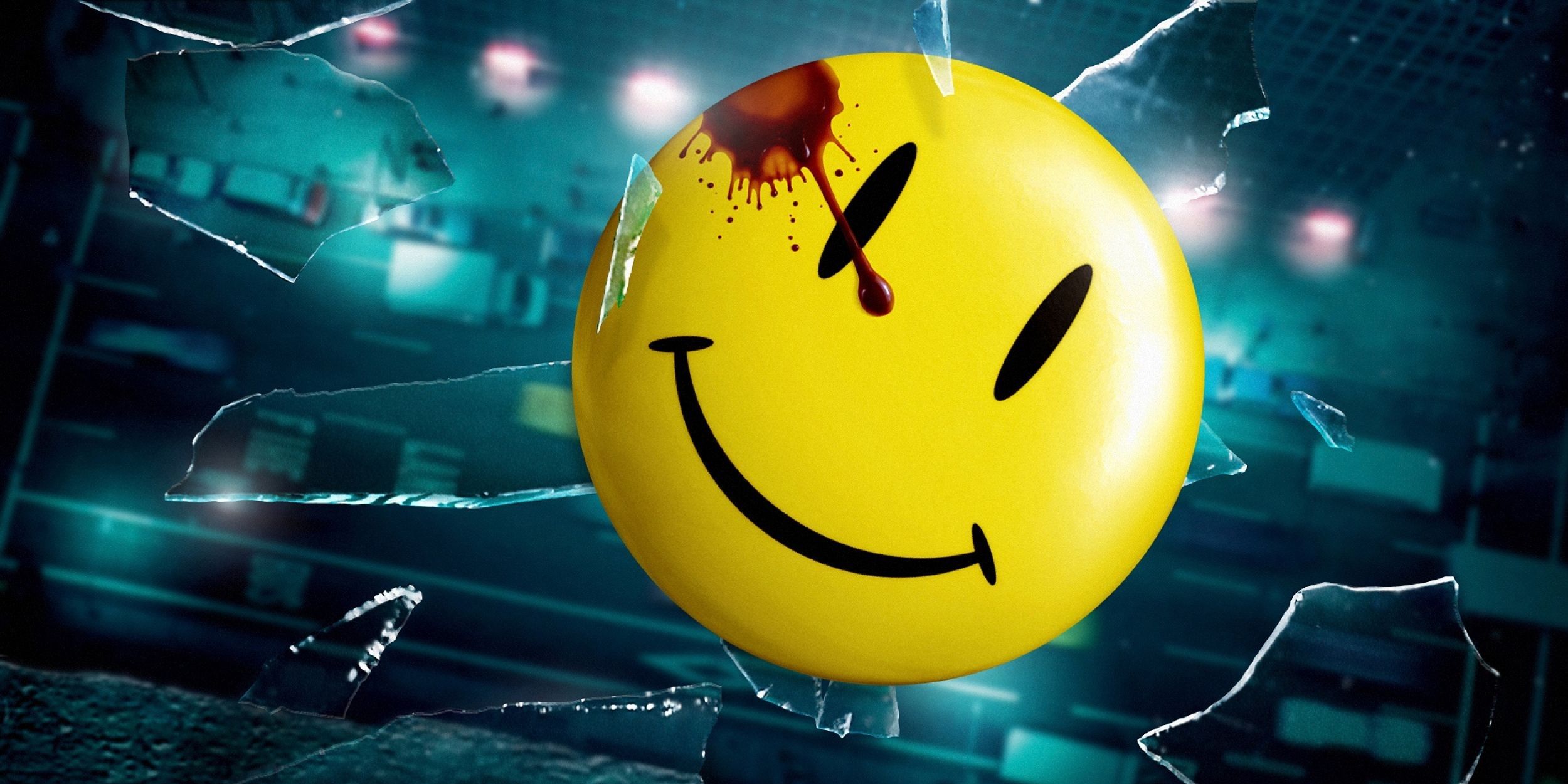The blood-splattered smiley face badge logo synonymous with Watchmen wasn't just designed to look great, it actually holds a much deeper significance to the story. Originally published by DC in 1986, Watchmen was created by Alan Moore and Dave Gibbons and went on to attain cult status thanks to its bleak take on the superhero genre, a mature, thoughtful story and compellingly flawed characters. Zack Snyder took Watchmen into the realm of live-action in 2009 and, a decade later, a Watchmen TV series is set to release, demonstrating the enduring popularity and legacy of the original story.
Several examples of Dave Gibbons' Watchmen imagery have taken on iconic status over the past 30 years. Rorschach's ink blob mask and the nuclear blue glow of Dr. Manhattan are both immediately recognizable, even to those who may not have read the graphic novel or seen the movie. By far the most famous Watchmen image, however, is the Comedian's bloody smiley face badge. The symbol appears in the very first panel of Watchmen's debut chapter, as the pin falls from the Comedian's freshly-murdered body, and has since been a key part of the franchise's look, inspiring the bright yellow color scheme closely associated with the Watchmen brand.
The smiley Watchmen logo serves multiple purposes. Aside from looking cool (and it absolutely does look cool), the symbol is ingrained into the very fabric of the Watchmen story. Dave Gibbons has revealed previously in interviews (via EW) that the badge was added as a way of giving the Comedian a touch of humor, but without making him too goofy, and that Alan Moore quickly developed a fondness for the image as a juxtaposition between the Comedian's jovial exterior and violent inner darkness.
Like many strokes of creative genius, however, the true worth of the Watchmen logo didn't develop fully until late in the process. Essentially, the image of a smiley face covered in blood reflects Watchmen's entire ethos. Moore and Gibbons took something inherently wholesome (superheroes) and shone the grim light of reality upon it, forever tarnishing something that was once merely light-hearted escapism. In a parallel way, the Comedian's blood spoiling the innocent bright yellow smile of his badge allows Watchmen to signal its intentions from the very start and Gibbons confirms that this metaphor was not lost on himself and Moore.
Arguably, however, Watchmen's defining image is even more relevant in 2019 that it was in the 1980s. There is a significant difference in tone between the original Watchmen comic book and the 2009 movie adaptation, with the latter dropping the comics' sense of comedy in favor of a typically Snyder-esque gritty realism. This resulted in a more grounded ending sequence that replaced Moore's giant mutant squid with a nuclear explosion, and a similar aesthetic looks set to feature in the upcoming TV sequel.
The shift towards a less cartoonish Watchmen furthers the metaphor of the bloodied smiley face. Just as the original story took the superhero genre and subverted it with politics, violence and an unhappy ending, the two live-action Watchmen ventures push the franchise into more mature, intense territory, twisting the approach of the comic book source material and marring what could be described as Watchmen's precious few brighter notes.
Watchmen premieres in October 2019 on HBO.

